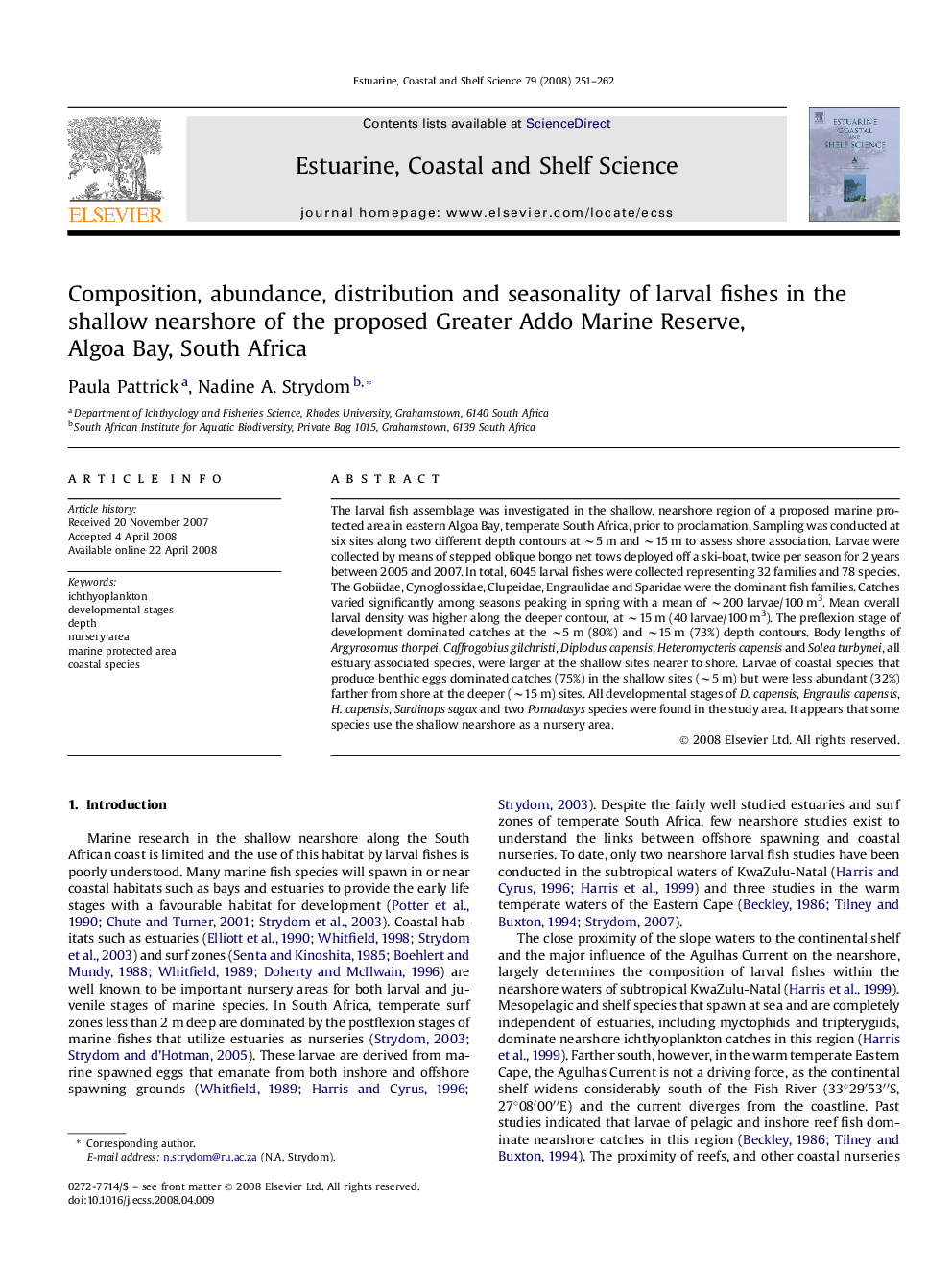| Article ID | Journal | Published Year | Pages | File Type |
|---|---|---|---|---|
| 4541827 | Estuarine, Coastal and Shelf Science | 2008 | 12 Pages |
The larval fish assemblage was investigated in the shallow, nearshore region of a proposed marine protected area in eastern Algoa Bay, temperate South Africa, prior to proclamation. Sampling was conducted at six sites along two different depth contours at ∼5 m and ∼15 m to assess shore association. Larvae were collected by means of stepped oblique bongo net tows deployed off a ski-boat, twice per season for 2 years between 2005 and 2007. In total, 6045 larval fishes were collected representing 32 families and 78 species. The Gobiidae, Cynoglossidae, Clupeidae, Engraulidae and Sparidae were the dominant fish families. Catches varied significantly among seasons peaking in spring with a mean of ∼200 larvae/100 m3. Mean overall larval density was higher along the deeper contour, at ∼15 m (40 larvae/100 m3). The preflexion stage of development dominated catches at the ∼5 m (80%) and ∼15 m (73%) depth contours. Body lengths of Argyrosomus thorpei, Caffrogobius gilchristi, Diplodus capensis, Heteromycteris capensis and Solea turbynei, all estuary associated species, were larger at the shallow sites nearer to shore. Larvae of coastal species that produce benthic eggs dominated catches (75%) in the shallow sites (∼5 m) but were less abundant (32%) farther from shore at the deeper (∼15 m) sites. All developmental stages of D. capensis, Engraulis capensis, H. capensis, Sardinops sagax and two Pomadasys species were found in the study area. It appears that some species use the shallow nearshore as a nursery area.
